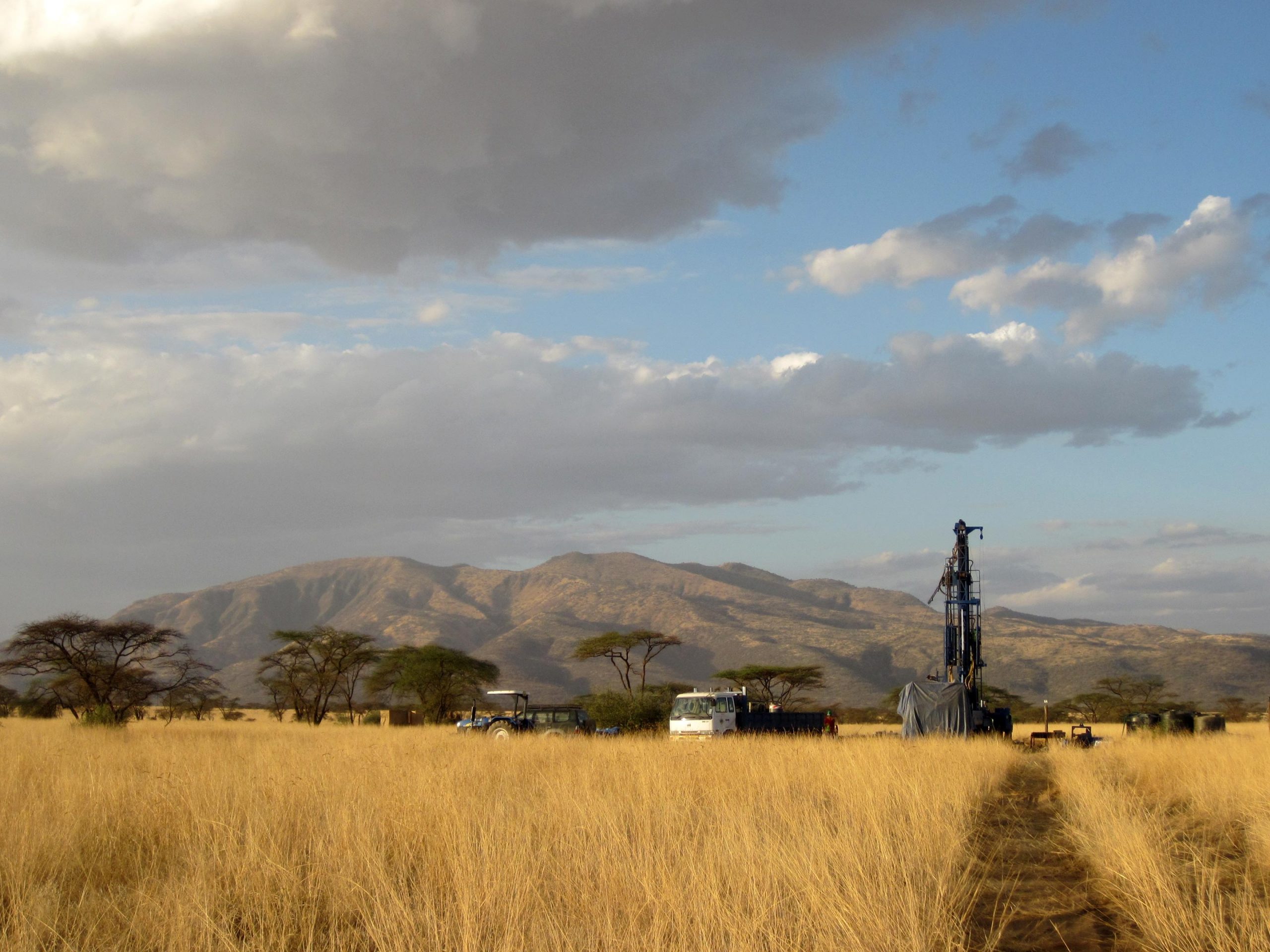
Credit: Human Origins Program, Smithsonian.
New drill core shows a boom-bust landscape in the east African rift valley at a defining moment in human evolution, technology and culture.
For hundreds of thousands of years, early humans in the East African Rift Valley could expect certain things of their environment.
The first analysis of a new sedimentary drill core representing 1 million years of environmental history in the East African Rift Valley shows that at the same time early humans were abandoning old tools in favor of more sophisticated technology and broadening their trade networks, their landscape was experiencing frequent fluctuations in vegetation and water supply that made resources less reliably available.
The findings suggest that instability in their surrounding climate, land and ecosystem was a key driver in the development of new traits and behaviors underpinning human adaptability.
Decades of study at Olorgesailie by Potts’ team and collaborators at the National Museums of Kenya have determined that early humans at Olorgesailie relied on the same tools, stone handaxes, for 700,000 years.
At the same time, they began to trade resources with distant groups and to use coloring materials, suggesting symbolic communication.
Credit: Human Origins Program, Smithsonian.
In the October 21, 2020, issue of the journal Science Advances, an interdisciplinary team of scientists led by Richard Potts, director of the Human Origins Program at the Smithsonian’s National Museum of Natural History, describes the prolonged period of instability across the landscape in this part of Africa (now Kenya) that occurred at the same time humans in the region were undergoing a major behavioral and cultural shift in their evolution.
Decades of study at Olorgesailie by Potts’ team and collaborators at the National Museums of Kenya have determined that early humans at Olorgesailie relied on the same tools, stone handaxes, for 700,000 years.
All these changes were a significant departure from their previous lifestyle, likely helping early humans cope with their newly variable landscape, Potts said.
“The history of human evolution has been one of increasing adaptability,” Potts said.
The findings suggest that instability in their surrounding climate, land and ecosystem was a key driver in the development of new traits and behaviors underpinning human adaptability.
Credit: Human Origins Program, Smithsonian; core image courtesy of LacCore, University of Minnesota.
While some scientists have proposed that climate fluctuations alone may have driven humans to evolve this remarkable quality of adaptability, the new study indicates the picture is more complicated than that.
Instead, the team’s analysis shows that climate variability is but one of several intertwined environmental factors that drove the cultural shift they described in 2018.
The new analysis reveals how a changing climate along with new land faults introduced by tectonic activity and ecological disruptions in the vegetation and fauna all came together to drive disruptions that made technological innovation, trading resources and symbolic communication¬–three key factors in adaptability–beneficial for early humans in this region.
Erosion at Olorgesailie, a hilly area full of sedimentary outcrops, had removed the geologic layers representing some 180,000 years of time at exactly the period of this evolutionary transition.
That cylinder of earth, just four centimeters in diameter, turned out to represent 1 million years of environmental history.
Colleagues in the National Museum of Natural History’s Human Origins Program and Department of Paleobiology and dozens of collaborators at institutions worldwide worked to analyze the environmental record they had obtained, which is now the most precisely dated African environmental record of the past 1 million years.
Charting radioisotope ages and changes in chemical composition and deposits left by plants and microscopic organisms through the different layers of the core, the team reconstructed key features of the ancient landscape and climate across time.
“There was a massive change in the animal fauna during the time period when we see early human behavior changing,” Potts said.
Finally, Potts notes that while adaptability is a hallmark of human evolution, that does not mean the species is necessarily equipped to endure the unprecedented change Earth is now experiencing due to man-made climate change and Anthropogenic biodiversity loss.
“The question is, are we now creating through our own activities new sources of environmental disruption that will continue to challenge human adaptability?”.
Donner Foundation and the Peter Buck Fund for the National Museum of Natural History’s Human Origins Program?
Meme of the moment: ” ……instability in their surrounding climate, land and ecosystem was a key driver in the development of new traits and behaviors underpinning human adaptability………
Meme of the moment: ” …..That cylinder of earth, just four centimeters in diameter, turned out to represent 1 million years of environmental history………
“Finally, Potts notes that while adaptability is a hallmark of human evolution, that does not mean the species is necessarily equipped to endure the unprecedented change Earth is now experiencing due to man-made climate change and Anthropogenic biodiversity loss.”